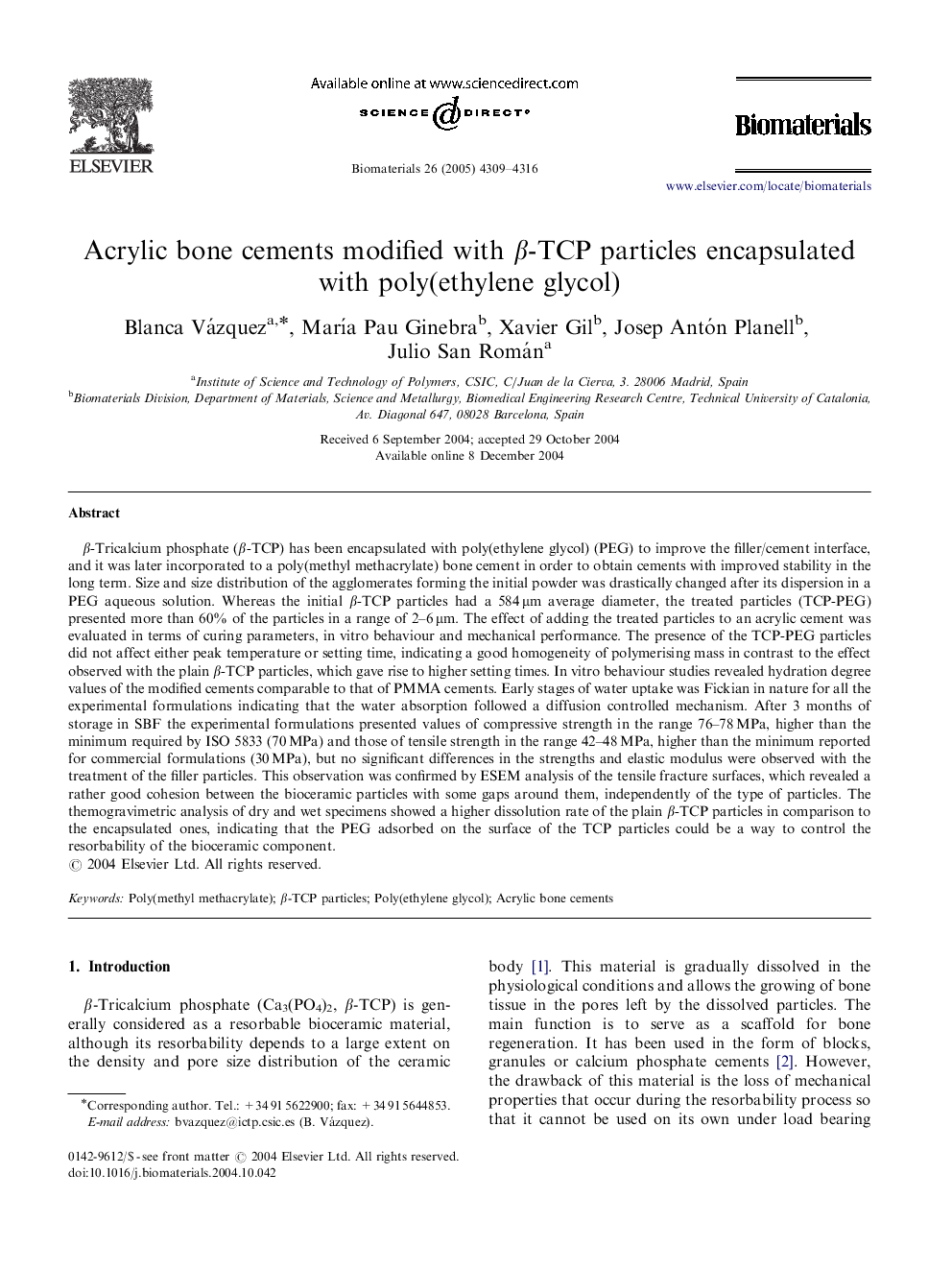| Article ID | Journal | Published Year | Pages | File Type |
|---|---|---|---|---|
| 11204 | Biomaterials | 2005 | 8 Pages |
ββ-Tricalcium phosphate (ββ-TCP) has been encapsulated with poly(ethylene glycol) (PEG) to improve the filler/cement interface, and it was later incorporated to a poly(methyl methacrylate) bone cement in order to obtain cements with improved stability in the long term. Size and size distribution of the agglomerates forming the initial powder was drastically changed after its dispersion in a PEG aqueous solution. Whereas the initial ββ-TCP particles had a 584 μm average diameter, the treated particles (TCP-PEG) presented more than 60% of the particles in a range of 2–6 μm. The effect of adding the treated particles to an acrylic cement was evaluated in terms of curing parameters, in vitro behaviour and mechanical performance. The presence of the TCP-PEG particles did not affect either peak temperature or setting time, indicating a good homogeneity of polymerising mass in contrast to the effect observed with the plain ββ-TCP particles, which gave rise to higher setting times. In vitro behaviour studies revealed hydration degree values of the modified cements comparable to that of PMMA cements. Early stages of water uptake was Fickian in nature for all the experimental formulations indicating that the water absorption followed a diffusion controlled mechanism. After 3 months of storage in SBF the experimental formulations presented values of compressive strength in the range 76–78 MPa, higher than the minimum required by ISO 5833 (70 MPa) and those of tensile strength in the range 42–48 MPa, higher than the minimum reported for commercial formulations (30 MPa), but no significant differences in the strengths and elastic modulus were observed with the treatment of the filler particles. This observation was confirmed by ESEM analysis of the tensile fracture surfaces, which revealed a rather good cohesion between the bioceramic particles with some gaps around them, independently of the type of particles. The themogravimetric analysis of dry and wet specimens showed a higher dissolution rate of the plain ββ-TCP particles in comparison to the encapsulated ones, indicating that the PEG adsorbed on the surface of the TCP particles could be a way to control the resorbability of the bioceramic component.
